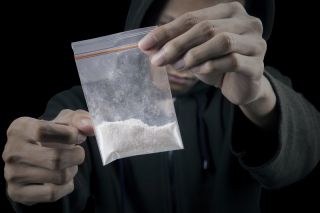Addiction
Update on Methamphetamine Addiction
The chemical methamphetamine hydrochloride is generally simply known as meth.
Posted September 2, 2014

Update on Methamphetamine Addiction
The chemical methamphetamine hydrochloride is generally simply known as methamphetamine. Common street names for methamphetamine include crank, speed, meth, crystal meth, ice and crystal tea. It has been a popular drug of abuse for many years in its conventional, powdered form, which is usually snorted or injected.
Methamphetamine differs from amphetamine in that, at comparable doses, much greater amounts of methamphetamine get into the brain, making it a more potent stimulant than amphetamines. It also has longer-lasting and more harmful effects on the central nervous system. These characteristics make it a dangerous drug with high potential for widespread abuse.
Methamphetamines are produced to be potent and easily smoked, in addition to being smoked or injected. In one of its forms, known as "ice," the substance resembles rock candy or a chip of ice. It is smoked in a similar fashion to crack, a form of cocaine, and provides the user with an immediate, intense high and false sense of increased alertness.
Crystal methamphetamine is highly and virtually immediately addictive. It is a psychostimulant that increases the levels of at least 3 important neurotransmitters: dopamine, serotonin, and norepinephrine. The high from meth occurs almost instantaneously, rapidly producing feelings of mood elevation, euphoria, and elimination of fatigue, excessive talking, social and sexual disinhibition, and a sense of increased personal power. Methamphetamine abuse also contributes to increased transmission of infectious diseases, such as hepatitis and HIV/AIDS.
According to data from the 2012 National Survey on Drug Use and Health (NSDUH), “over 12 million people (4.7 percent of the population) have tried methamphetamine at least once. NSDUH also reports that approximately 1.2 million people used methamphetamine in the year leading up to the survey.”
The Drug Abuse Warning Network (DAWN), which collects information on drug-related episodes from hospital emergency departments (EDs) throughout the USA, claims methamphetamine accounted for about 103,000 ED visits in 2011. Other drugs may interact with methamphetamine, including prescription and over-the-counter medicines, vitamins, and herbal products.
Our current knowledge base clearly demonstrates that illicit psychostimulants produce lasting neural and behavioral changes that contribute to the progression and maintenance of addiction. Psychotherapy is the most effective treatment for methamphetamine addiction. Comprehensive behavioral treatment approaches that combine cognitive-behavioral therapy, family education, individual counseling, 12-Step support, drug testing and encouragement of non-drug-related activities can be effective in reducing methamphetamine abuse.
There are no medications available to counteract the specific effects of methamphetamines, help prolong abstinence from or reduce the abuse of methamphetamine. Talk to an addiction treatment center or personal care provider for resources to provide addiction help through support and therapy.
##
Constance Scharff is the Senior Addiction Research Fellow and Director of Addiction Research for Cliffside Malibu. She is also the coauthor of the Amazon.com bestselling book Ending Addiction for Good with Richard Taite.


